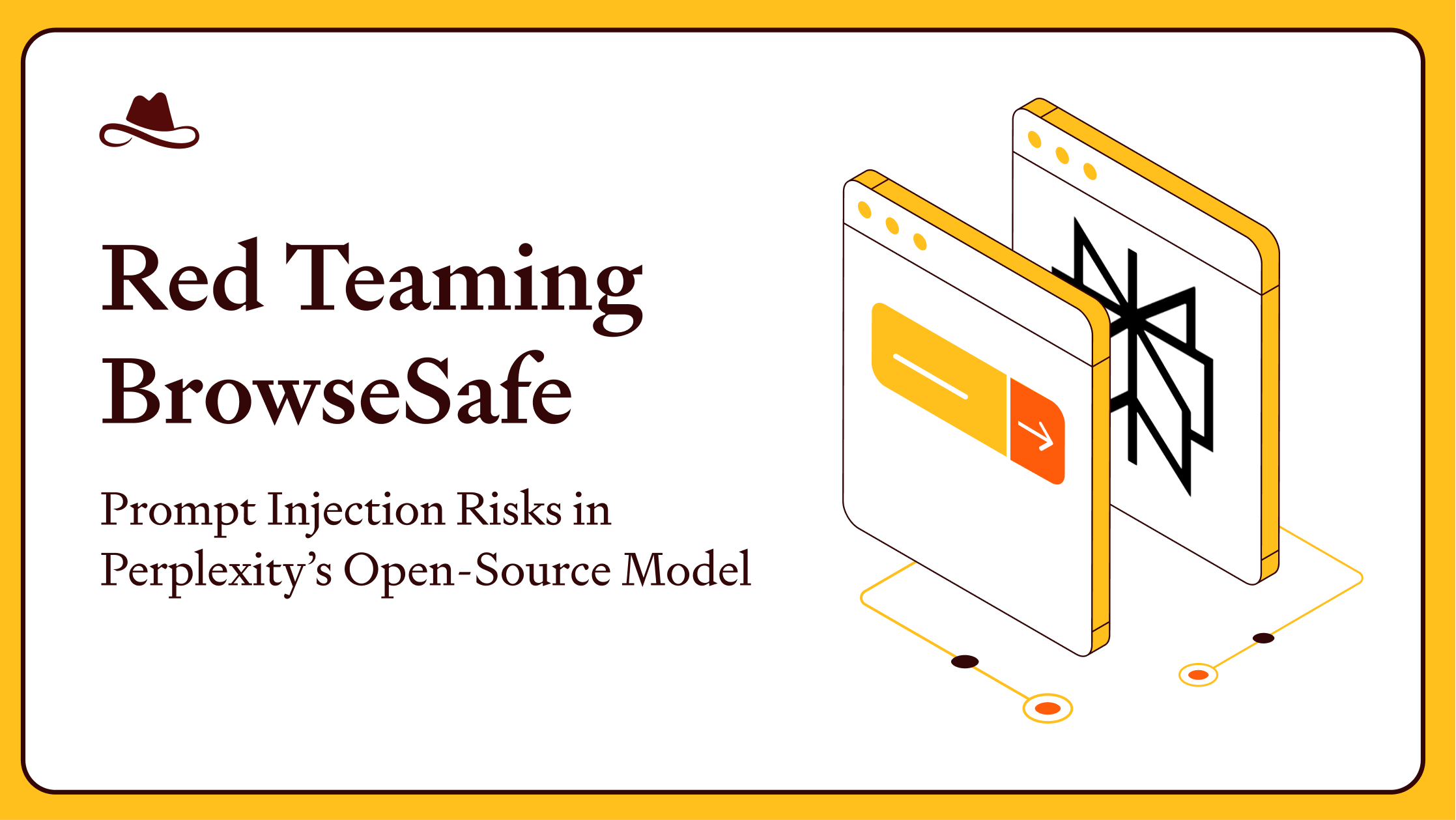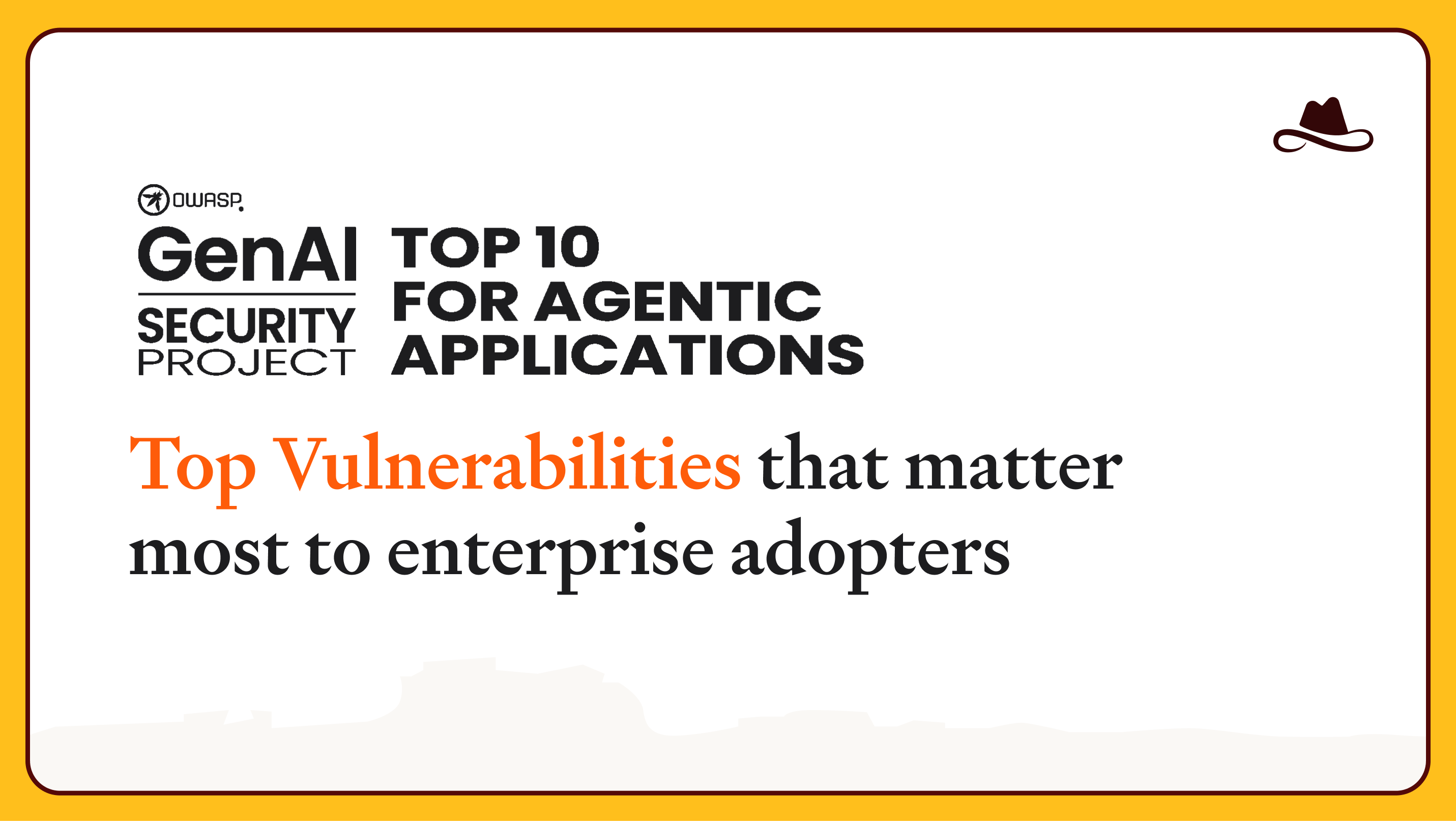Long-time readers of this blog are familiar with the main issues in Large Language Model (LLM) Security. We’ve been at the forefront of this evolving field, helping forward-thinking organizations to get on board with the LLM revolution without increasing their exposure to undue risk.
In this article, we’re taking stock of where we are, almost a year after we began, and helping decision makers to prioritize in the face of new and evolving threats.
Why Companies Should Integrate Large Language Models (LLMs) in Their Development Process and Environments
Incorporating Large Language Models (LLMs) into your development process and environments can revolutionize how your company approaches software development and innovation. Here’s why integrating LLMs is a game-changer:
Enhanced Productivity & Cost Efficiency:
LLMs can automate repetitive coding tasks, generate code snippets, and provide real-time code suggestions, allowing your developers to focus on more complex and creative aspects of the project. Also, improving code quality can reduce development costs, minimizing the need for extensive debugging and maintenance
Improved Code Quality:
With the ability to analyze vast amounts of code data, LLMs can help identify potential bugs, optimize code efficiency, and ensure adherence to best practices, resulting in higher quality and more reliable software.
Accelerated Development Cycles:
By streamlining tasks such as code generation, documentation, and testing, LLMs can significantly reduce development time, enabling faster project completion and quicker time-to-market for your products.
Innovation and Scalability:
LLMs empower developers to experiment with new ideas and technologies by providing instant feedback and support, fostering a culture of innovation and continuous improvement within your development team.
Key Use Cases for Integrating LLMs in Companies
LLMs can be integrated into various aspects of a company's operations. The illustration below highlights the different IT and App use cases, showing how LLMs can interact with employees, developers, third parties, customer-facing applications, and internal apps.
.avif)
CISO Talk: Main Security Concerns in Large Language Models (LLMs)
CISOs and other stakeholders are in the unenviable position of having to balance efficiency and safety. Organizations are looking to them to find ways to integrate LLM technology in a way that promotes progress, without compromising overall security posture - and they need to move fast in order to avoid losing their competitive edge.
The concerns that we regularly hear from CISOs generally fall into one or more of these 4 categories.
Data Leakage and Privacy Concerns
LLMs are trained on huge datasets, increasing the risk of data leakage. And this isn’t just a hypothetical risk: Microsoft’s 38TB leak showed exactly how easily a leak can occur. In all likelihood, this won’t be the last.
Generation of Malicious Content
Even without the intervention of a cyber attacker, LLMs can generate undesirable outputs, ranging from comically malicious to potentially catastrophic. These vulnerabilities emphasize the need to train teams to use large language models responsibly and critically, like any other tool.
Model Poisoning and Adversarial Attacks
Security-minded leaders are concerned about model poisoning and adversarial attacks. They understand that attackers are working overtime to find new ways of injecting malicious data into the training process or input data to manipulate the model's behavior. These attacks can degrade model performance or cause it to make harmful predictions, which understandably keeps the C-Suite up at night.
OWASP Top 10 LLM Security Risks
The OWASP Top 10 for LLMs highlights the most common and critical security risks in LLM applications, providing a comprehensive checklist for organizations who want to get LLM security right from the beginning.
- LLM01: Prompt injections can manipulate LLMs, leading to exposure of proprietary data and unauthorized actions.
- LLM02: Insecure output handling happens when outputs are accepted without scrutiny, opening the door to a wide range of possible attacks.
- LLM03: Attackers can poison training data to execute narrative attacks that degrade model accuracy and performance.
- LLM04: A Denial of Service attack can degrade service quality, causing outages and raising operational costs.
- LLM05: The software supply chain is a vulnerability itself. Compromised datasets and tools can enable security breaches or system failure.
- LLM06: Sensitive information disclosure arising from a lack of authorization tracking can lead to privilege escalation and confidentiality loss.
- LLM07: Insecure plugin design can expose sensitive information through LLM interactions, compromising user privacy.
- LLM08: If plugins, agents and APIs are given excessive agency, they can be made to perform unwanted actions.
- LLM09: Overreliance occurs when humans accept LLM outputs uncritically, without the necessary validation.
- LLM10: Model theft involves the exploitation of plugins for malicious requests.
8 Components of LLM Security
1. Data Security
Large Language Models process huge volumes of data, including their initial training data sets, and the input data that comes from users. All of that data needs to be treated with an appropriate level of confidentiality to avoid disclosing sensitive information. It’s also vital to protect the integrity of this data against corruption, tampering, or unauthorized modification.
2. Model Security
Much like the data they process, models themselves are vulnerable to attacks and need appropriate defenses. Securing an LLM calls for strong access controls, encrypting data, anonymizing sensitive information, and ensuring model integrity through version control and validation. Continuous monitoring, logging, and the deployment of intrusion detection systems are crucial for threat detection and response.
3. Infrastructure Security
Over and above data and model security, it’s essential to secure the actual hardware and software environment that a model operates in. Cloud services, services and networks are all vulnerable to cyber attacks, so they need to be well secured before an organization even considers taking on the additional risks involved in LLM deployment.
4. Employee and Insider Risk Management
An organization’s own employees can set the stage for an attack - whether they know it or not. When insiders disclose a company’s proprietary information, or customer data, this can lead to breaches and heavy legal consequences. It’s vital to implement strict controls over employees’ use of LLMs, to proactively flag and prevent this information from getting into the model.
5. Privacy and Data Handling
Proper privacy and data handling practices are crucial for protecting sensitive information. This includes encrypting data at rest and in transit, anonymizing datasets, and ensuring that data collection and usage comply with relevant privacy regulations.
6. Transparency and Accountability
Building trust in AI and ML systems is all about being transparent and accountable about training, testing and use of models. Regular audits and reporting on performance and decision-making are also key to building trust over time.
7. Privacy-Preserving Techniques
LLMs need to learn from aggregated information, but this can compromise privacy in unacceptable ways. Methods like federated learning and differential privacy can help to protect sensitive information while still allowing the model to learn. These measures help to keep data secure throughout a model’s life cycle, without hampering progress and development.
8. Regulatory Compliance
There is a growing list of regulatory frameworks for organizations to consider when deploying LLMs: existing legislation like GDPR, CCPA & HIPAA, as well as new laws that have been written specifically to address the emerging threats in LLM security. Staying compliant is a complex and ongoing task, but essential to avoiding reputational and legal penalties.
LLM & GenAI Security Challenges
Even organizations who are fully aware of these security components may not know exactly where to start. That’s because LLM security presents multifaceted challenges: the possibility of data leaving (through a breach), or the wrong information exiting the system (in the form of manipulated outputs). In addition to juggling those priorities, leadership also has to maintain ethical standards and legal compliance to safeguard against misuse of these powerful models.
Many are left wondering exactly what they should be doing. Here are our top recommendations, based on what we’re seeing in the field.
Best Practices to Mitigate LLM Security Risks
1. Secure Model Training and Data Management
Encrypt, anonymize, validate: strict data governance is key to protecting LLMs from unwelcome interference. Always use clean, unbiased datasets and regularly update models with security patches. Differential privacy techniques can also help to limit data loss in the event of a breach.
2. Regular Audits and Testing for Bias and Vulnerabilities
It’s always a good idea to assume that attackers are doing their utmost to get one step ahead of your security plan. And one of the best ways to head them off at the pass is to think like them, and conduct adversarial testing on your own system to expose weaknesses. You can automate things like vulnerability scanning and bias detection, but to make a real impact it’s important to involve multidisciplinary teams in collaborative efforts.
3. Implementing Strong Access Controls
Multi-factor authentication (MFA) and role-based access control (RBAC) are standard cybersecurity practices that are crucial for securing LLMs. Every organization that uses LLMs should follow secure key management protocols and implement least privilege principles. Those are the basics, but not enough on their own. It’s also important to review access logs and periodically audit them to flush out suspicious behavior and attempts to gain access without authorization.
4. Continuous Monitoring and Response Plans
As every security professional knows, there is no such thing as an invincible security strategy. So you need a solid response plan to mitigate damage if an attacker does manage to slip through the net. That begins with real-time monitoring to detect anomalies and any security incidents as they begin to unfold. Intrusion detection systems (IDs) and security information and event management (SIEM) solutions are also valuable tools that can help to aggregate and analyze security data.
Whichever tools you use, your response plan should emphasize containment, eradication and recovery - and it can’t hurt to conduct drills to maintain readiness.
5. Ethical and Responsible Use
At the end of the day, the success of any LLM security program will rise and fall with the conduct of people within the organization. Clear guidelines help to keep LLM deployments compliant with privacy laws and user consent. To establish these guidelines, organizations need to understand the models they’re using, underscoring the critical importance of model interpretability.
LLM Security with Lasso Security: Cutting-Edge Solutions for LLM Pioneers
Now that LLM technology is part of the furniture, organizations are increasingly on the lookout for LLM-specific security solutions. At Lasso, we believe it’s fully possible to embrace progress while staying secure, and we have built the tools to help organizations of all types and sizes to achieve that state.
Our comprehensive solution includes shadow AI discovery, real-time monitoring, and threat detection, all without requiring specialized AI or cybersecurity expertise. With Lasso, you can achieve full visibility and robust protection for your LLM applications. Contact our team to learn more about how Lasso Security can safeguard your data and enhance your AI initiatives.






